Dora Goodman Marries new Technology to old School Camera Tradition
For more stories like this, subscribe to The Phoblographer.
“The driving force behind our dedication to the craft of designing and creating cameras, is to carve a legacy”, says Dora Goodman about her eponymous, small scale camera manufacturing company. What started as a hobby to beautify the exterior look of vintage cameras has blossomed into a camera design and production career for Dora. Based out of Hungary, her company produces 3D printed analogue camera bodies and their accessories. They also work on open-source designs allowing other photographers to modify and improve these designs to their liking.
Want to have your photos featured? Here’s how you can do that.
It’s no secret that at The Phoblographer, we love analogue photography. That’s not because we’re old. The average age of the team here is 35. But it’s more so because the physical and emotional experience of using film cameras is still unmatched by digital ones. I have an ever-growing collection of 35mm and 120mm film cameras; each of them distinct in its look and feel. When it comes to handling, I would rate almost all of them above the digital cameras I use for my work. There are times when I like to take them out and hold them in my hands just to enjoy the feel of old school metal and leather, without even shooting a frame. This is the reason why a lot of manufacturers still make digital cameras with film body looks; the appeal of those bodies transcends decades. Dora and her team have clearly understood the need for this visual and tactile experience. They’ve embraced this in the design of their line of cameras. With the introduction of 3D printing technology into their workflow, the turnaround time has become quicker and creative possibilities, endless

The Phoblographer: Tell us about yourself and your journey to discovering photography
Dora Goodman: My name is Dora Goodman and I am the founder of Dora Goodman Cameras.
Analog photography has been around for over a century, evolving as technology changes. Throughout time, the film photography community has served as a collection of minds, minds that collaborate, design, and fine-tune continuously. At Dora Goodman Cameras, we build on this mindset to take traditional analog photography to a new level, mixing the old with the new.
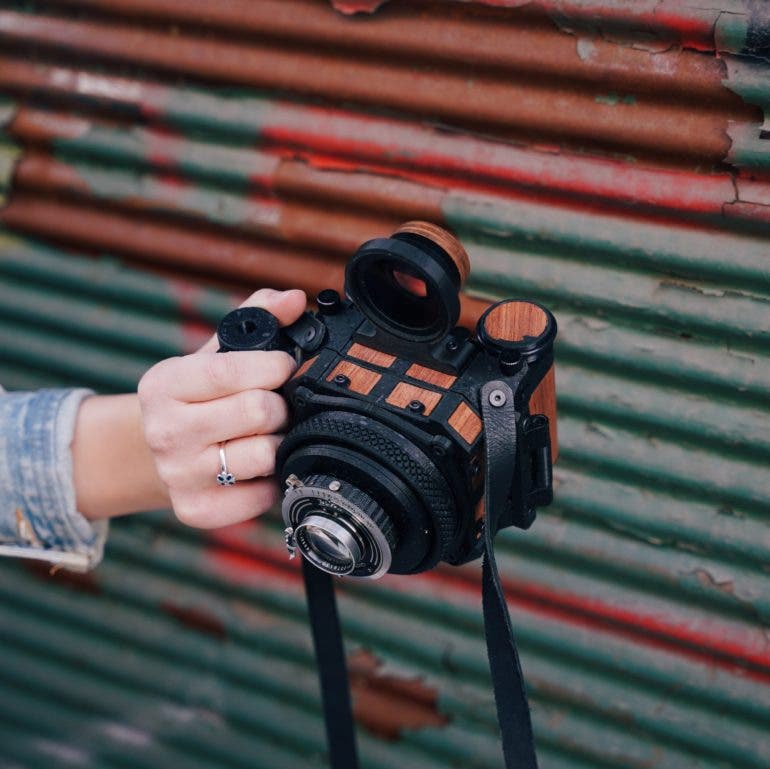
We are a small team of photography enthusiasts who conceptualize 3D printed medium format and pinhole cameras, as well as build one-of-a-kind custom film cameras based on our own designs. Our dream, and the driving force behind our dedication to the craft of designing and creating cameras, is to carve a legacy of Dora Goodman in the analog community’s ever-evolving story.
I started the brand in 2016, driven by my interests in fashion, handmade designer products, and photography, but it was never my plan to build a whole business around this; I just liked to do it – but that time, I was still working full time in an office job. I’ve always had an obsession for handmade objects, jewelry, woodwork, interior design, and, of course, photography. I worked with wood and glass (not professionally) in the past, and I had a small collection of beautiful cameras, and then the two things came together
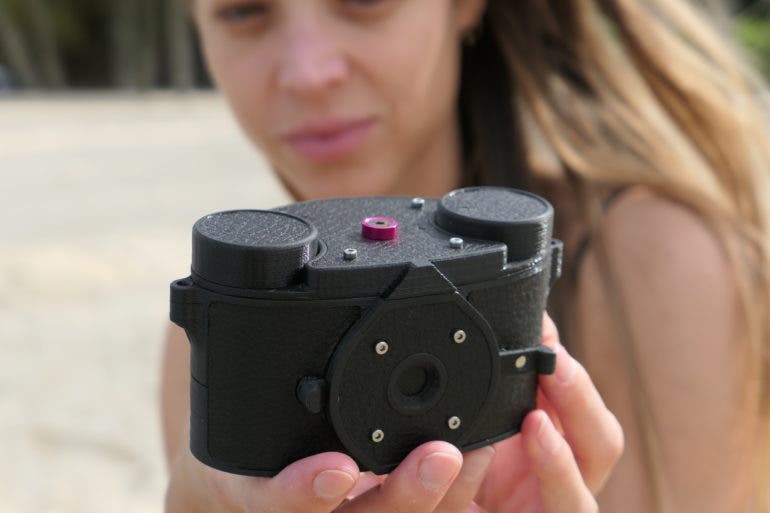
Also, it was never my plan to be a professional photographer. And then, one day I tried analog photography, and I fell in love immediately. I bought my very first analog camera, shot my first roll of film, and since then, I never stopped doing it. My first analog camera was a very old Praktica from an antique shop in Budapest. It was around 10 years ago. I still remember the feeling I had when I got back from the lab my first roll of 35mm film. It was so rich in details, much richer than the digital ones; I totally fell in love with the colors, with the details, and with the tones. Shooting analog also gives you excitement – you don’t immediately see your result, you need to wait, and probably by the time you receive your photos, you already forgot what you actually shot or what kind of situations you were in. So then sometimes you are just so surprised by the results. And it’s a great feeling.
The Phoblographer: Juggling photography and a full-time career in another field is never an easy job; I did the same for over 11 years myself. How did you keep the passion burning inside you to eventually transition to photography full-time?
Dora Goodman: I never planned to build a whole business around this, but when I realized what I do is actually getting more and more popular, I got coverage on quite big websites, I worked together with inspiring photographers my passion started to burn more and more. And basically, right after I decided to give it a go, I made a deal with my office job that I will only work 3 days a week for then, so I can dedicate 2 full days for my business. I am very thankful for them for letting me do this and supporting me in my dream. I believe if you try to do 2 jobs at the same time, the most important thing is to have dedicated days where you work on your love project; otherwise, you will always prioritize your full-time job.
In the beginning, it was a one-man show, but for now, we slowly grew into a team. I am very grateful that we could make this happen; together we are capable of much more. Right now, I am mostly focusing on the creative part, and I have amazing team members who are responsible for other aspects of our business.
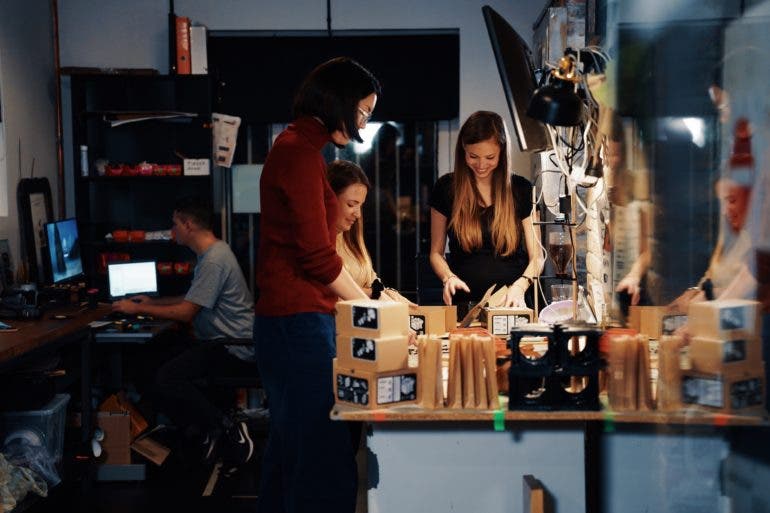
The Phoblographer: You started out with personalising your own cameras with leather and wood. With vintage film cameras holding their value the more they remain in a new and original condition, what is it that drives some of your customers to want to customise their cameras for a unique look?
Dora Goodman: Wood and photography have a common past, as in the old times most of the cameras were made out of wood. Wood was and will always be a wonderful material, and it just simply looks amazing when used with cameras. It feels good to touch and good to smell.
Imagine that you have a vintage camera from the ’20s, ’30s which still works very well, but the original leather doesn’t really survive all those years, so you are afraid of even touching it. Why not give it a fresh, new skin and make it live longer? 

I think working with wood will always be present in the camera business; if we just think of today’s modern big brands, they also like to use, for example, grips made out of wood, especially on those parts where you actually touch the camera.
The Phoblographer: The global analog community is a wonderful one; there’s a familial sense when you see someone else around town with a film camera. What are some of the more unique customisation requests you’ve received from around the world?
Dora Goodman: Most of the time our customers didn’t have exact requests or needs; what they wanted was to own a special, customized Dora Goodman Camera, so usually they trusted me 100%, sent their camera, and they let me create something beautiful with it. We more or less discussed materials or colors that I might use, but in many cases, we did not discuss any details, and it was a total surprise for them when it got ready. And they all loved it 
These days we don’t really do this anymore; we focus on our 3D printed cameras, where we build all the custom cameras based on our own ideas. We build every new camera as it would be ours; we dream it, create it, try it, love it and then sell it for someone who will love it just like we did.

The Phoblographer: You’re well known for being one of the few individuals who handcrafts new camera bodies these days. How does it feel to marry new generation 3D printing technology with old school film camera traditions?
Dora Goodman: The thing I am most happy about is that thanks to the endless possibilities and flexibility of the new generation [of] 3D printing technology, we could create our own camera, the products that we always wished existed. This was a big dream of mine, and I always wanted to stick to analog. Modern technology lets us do this.
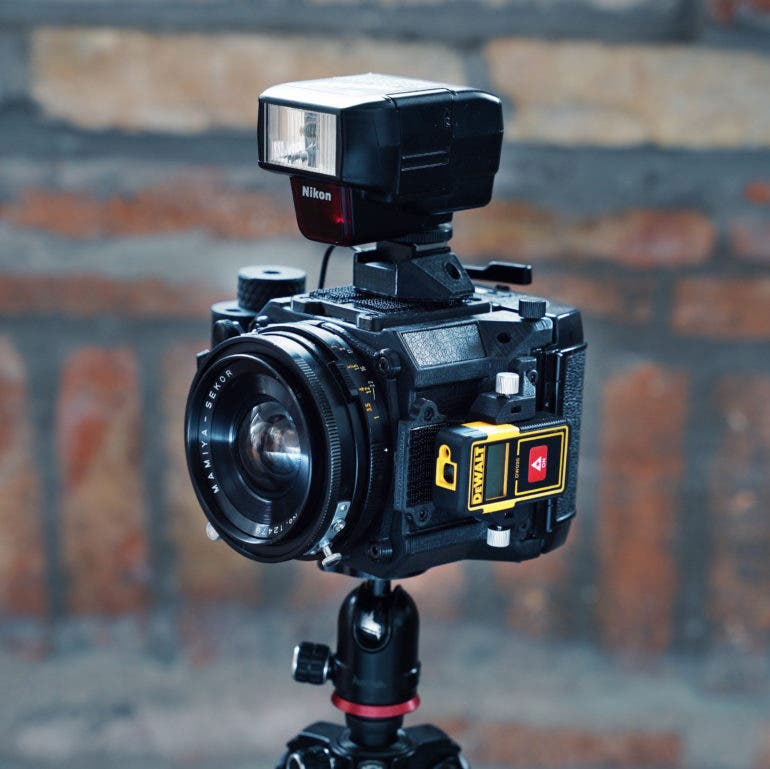
The Phoblographer: What’s the durability like when it comes to 3D printed cameras and parts? Do they stand up to daily wear and tear of usage? Tell us some of the advantages of this technology over other materials like wood and metal.
Dora Goodman: Oh yes, they totally stand up to that. We designed our cameras with an outdoor mindset; we wanted to create something that you are not afraid to use – because it is so fragile, or it was so expensive that it ends up just being a decoration in your room – that is totally okay just to put in your backpack without a proper case when you go hiking, or you don’t make a huge deal out of it when it gets a bit dirty. Obviously, if you have a Hasselblad that you bought for a few thousand of dollars, you will protect it more than anything else.

We managed to find a good quality material that we trust 100%, and know that it’s very durable, and there are always new materials we are experimenting with.
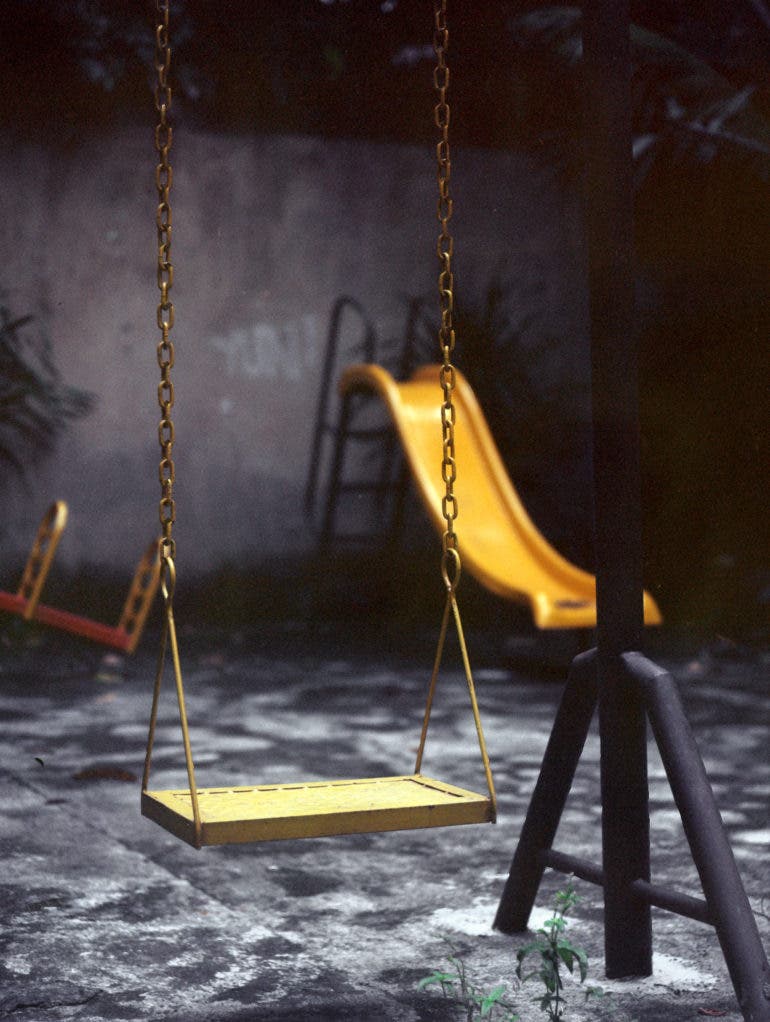
I think one of the biggest advantages is the size and the weight. Usually, when it comes to medium format photography, that means a heavy camera with complex engineering inside, which also means higher costs. Our Goodman Zone, thanks to the filament we use, is super lightweight, it will only cost you 100-200 bucks and you can easily get the same results. I think the photos we did with this camera and also photos from our community proves it very well (you can find many of these in the Gallery section of our website)

The Phoblographer: Is there a steadily growing demand for new units? Please take us through the process of production from conceptualisation to dispatch.
Dora Goodman: Our most popular model is the Goodman Zone medium format camera. We launched this camera as a product for sale in October 2019, but we have been working on it since 2017. So the full process from the idea until it became an actual product took around 2 years. Designing something from scratch takes a very long time with many trials and errors. 3D printing has endless possibilities and flexibility, which makes our life easier but also harder at the same time. The most difficult part is that the printing can take hours, so you set it up in the night, go to sleep hoping everything is gonna be alright, and in the morning, you wake up to see it has become a total mess because something went wrong during the process. But on the other side, after a print is ready and we do some small thing we want to finetune, we just sit down in front of our computers, modify the files and then print it again to see if it works or not. This already assumes that to develop a new camera means thousands of prints that are actually not good and end up in the trash, and still we are only talking about the printing itself. Then comes the assembly, the test shooting, the waiting filled with excitement until we get the photos back from the lab, and then we realize there is a light leak. Okay, so we go back to the designer table and start again. 

Since the Goodman Zone camera was launched, we are continuously developing it, creating new accessories, new mods, and new formats; for example, we just released a 6×12 version which was always a big dream to make.

Also, I need to mention that all our products and packages are fully handcrafted, our heart and soul is in everything we create in our small workshop. Each piece is painstakingly examined before being packaged and shipped to the customers, every step of the way done by hand, even down to each sticker placed on every box. We have no automation, no huge manufacture, no industrial machines, we do everything ourselves, so usually after placing an order it takes 20-30 days to prepare the package for the customer.

The Phoblographer: Designing an all new camera must be a special feeling in itself. What are some of the inspirations (photography or otherwise) that you incorporate in your camera designs?
Dora Goodman: Mostly today’s modern cinematic cameras, and different kinds of outdoor gear. We believe in functional industrial design, where function comes first and that will actually result in a nice shape with a minimalist look.

The Phoblographer: Are the designs modular and upgradeable in the future? What about the parts; are they easy to replace out if they get damaged?
Dora Goodman: Yes, definitely, we always keep this in mind for all our developments. Once someone bought a camera from us, we would like it to be compatible with our future mods, accessories and developments as well, so he/she can just upgrade his/her already existing camera.

If anything gets damaged, our customers usually message us, and we try to respond as quickly as we can, to provide good customer service, help them with advice on how to fix it, and if it is not fixable, we are happy to replace those certain parts for them. So far it works pretty good, and also I think the DIYness of the product also means that many of our customers are really good at these kinds of things, so they are happy to discover different solutions and try to fix it on their own.
We also offer a lot of small accessories and hardware kits via our workshop so those also help.
The Phoblographer: Is the concept of open sourced design a double edged sword? On the one hand you’re graciously opening up your 3D designs to a fascinating community of like minded individuals; on the other there is the potential of the designs being ripped off. What are your thoughts on this matter?
Dora Goodman: This is how we started and this is how our brand name started to be known, so we are planning to keep it like that until we can. Yes, it can be a double-edged sword, just like you said, but on the other hand, it attracts so many people and conveys a good message about the brand. Fortunately, we did not have too much problem from being ripped off, and I hope it stays like that. A few times, we got the info from our community that someone is selling a camera that was printed from our files, and in these cases we reached out to that person and asked them kindly not to do that. So far, it was always okay. It is actually stated very detailed in our Terms & Conditions, so in case we would face a more serious issue I think we could protect ourselves with it.

But let’s talk a bit more about the positive side! What I really like about being open source is that many of our followers have great ideas on how to modify or improve our models, and when they do so, they always share with us their new files. So thanks to them, we are constantly growing and having newer and newer variations on the original Goodman cameras.
And this is what we try to communicate through our GoodLab, which is a collaborative space for like-minded camera builders to join together and share their knowledge and experiences. For those with access to a 3D printer or who possess the skill set needed to build a camera from the ground up, all of our files are free to download through our open-source platform. We highly encourage our GoodLab members to customize and modify them as they wish, contributing their own ideas and creations for everyone to enjoy.
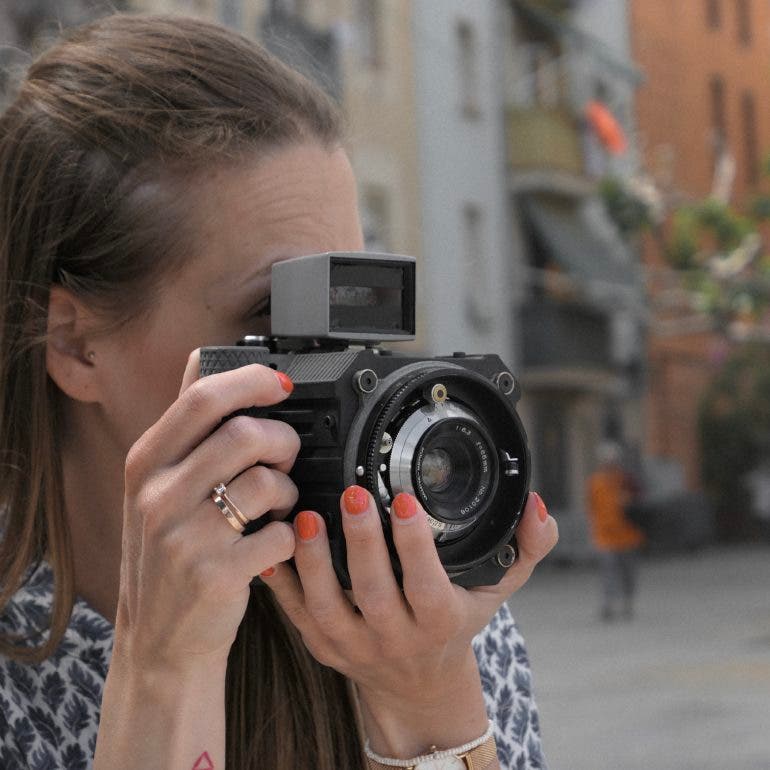
The Phoblographer: It’s almost like Lego for adult photographers. How complex or simple is the process of assembling one of these medium format beauties?
Dora Goodman: Adult Lego, yes, actually this is exactly what some of our customers say about it 
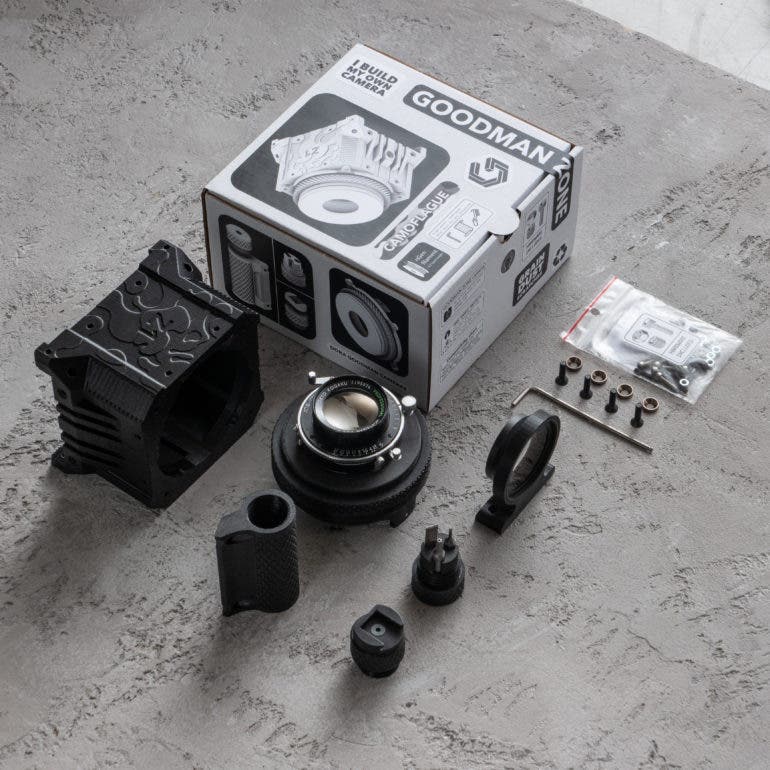
Also I need to mention here that if someone is afraid of the DIYness, or doesn’t really feel like doing it on their own, they can order the camera from us pre-assembled as well, so we save the time and the hassle for them, and when they receive their camera they just need to attach the lens, the back and then they’re ready to shoot.
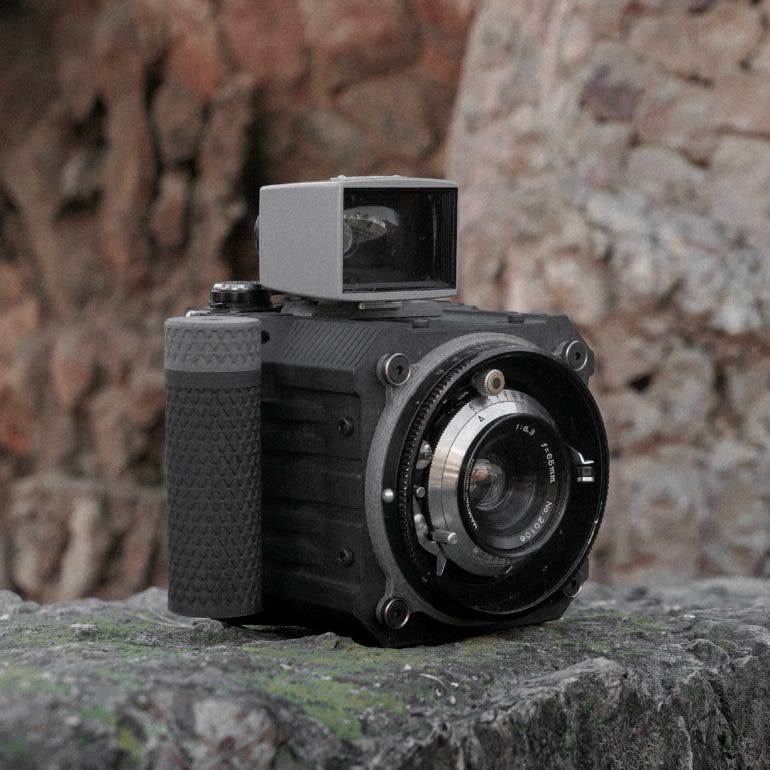
The Phoblographer: What is the future for 3D printing and photography? What is the next challenge for Dora Goodman’s team? Is there a potential for including digital back compatibility in an upcoming model?
Dora Goodman: In my opinion, 3D printing will change a lot – camera production in general. Customer/unique/individual needs will be possible to actually realise. Just like in the case of our open source projects – if anyone has an additional idea which might actually make our cameras even better functionally, then the consumer can work on it, we can work together on it, and maybe thanks to his/her idea we get a much better result. Huge production companies might listen to individual consumer needs, but they will rarely consider them, and they never let the “average” people have a look and a word into the production. 3D printing might change their perspective as the need for this will rise.
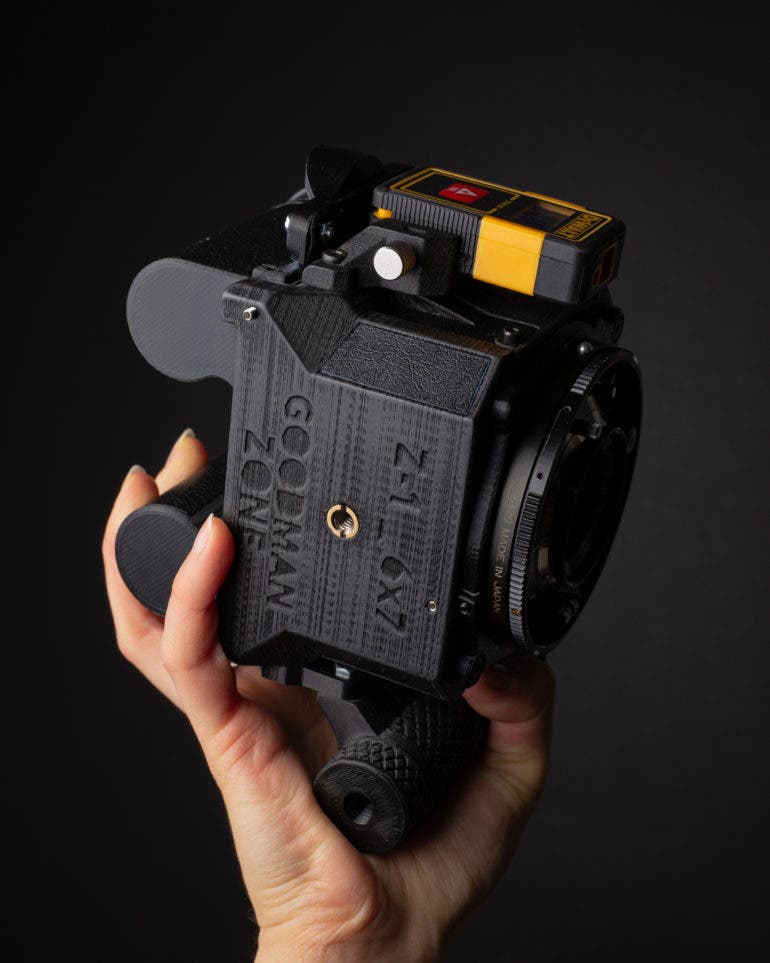
We believe customised cameras are the future, to create a camera that fits exactly into your hand, fits exactly your habits (how do you hold it, where do you like to push a button, etc..). We also believe that 3D printing will be so user friendly, professional and also common at the same time that everyone will be able to finalise his/her camera to meet his/her needs. And we hope that our company will be a pioneer in creating the most easily printable and user-friendly ready to shoot 3D printed analog cameras, that everyone – even without any 3D printing knowledge – will be able to print it back home in just a few hours 

At the moment, our goal for the next 1-2 months is to release the 6×12 camera in a DIY kit version to make it available for many people. Currently, it is only open source or we offer custom 6×12 full setup cameras once in a while, but seeing how popular the Goodman Zone DIY kit is, we would love to release this new format as well. We know it is a popular format, but pretty difficult to find one that is not bulky and also not super expensive. Ours is a very lightweight and affordable one, so we hope it will be a success story. Apart from that in the next 6 months, we are focusing on building more and more custom cameras, meaning they come together with a lens and a back and also custom accessories, so we make it easier for those who do not want to hassle to hunt a lens and a back separately.

All images by Dora Goodman. Used with permission. Head over to their website, Instagram page and Youtube channel to see more of these 3D printed cameras